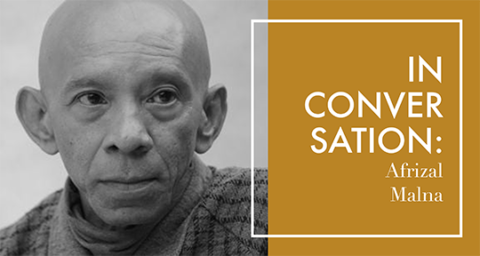Table of Contents
1. Introduction
Dreams have fascinated humanity for centuries, serving as windows into our subconscious minds. Methatreams seeks to explore the multifaceted nature of dreams, examining their significance, the science behind them, and the ways they can enhance our lives. In this article, we will dive into various themes related to dreams, from the scientific understanding of sleep to the cultural beliefs surrounding dream interpretation. Whether you’re a casual dreamer or someone who has always sought deeper meanings in your nocturnal adventures, this comprehensive exploration will offer insights and practical advice.
2. Understanding Dreams
Definition of Dreams
At its core, a dream is a sequence of thoughts, images, or emotions that occurs involuntarily during certain stages of sleep. Dreams can be vivid and realistic or abstract and bizarre, often blending elements of reality with fantasy. They serve as a canvas for our minds, where we can explore our thoughts, fears, desires, and experiences in a safe space.
Significance in Daily Life
Dreams play a crucial role in our mental and emotional well-being. They help process emotions and experiences, provide insight into our subconscious, and even serve as a source of inspiration. Some researchers argue that dreaming helps consolidate memories and can even contribute to problem-solving in waking life.
Types of Dreams
- Lucid Dreams: In these dreams, the dreamer becomes aware that they are dreaming and may gain some control over the dream’s narrative. This heightened awareness can lead to vivid experiences and exploration within the dream.
- Nightmares: These are disturbing dreams that can evoke feelings of fear, anxiety, or distress. Nightmares can be caused by stress, trauma, or even certain medications.
- Recurring Dreams: Some individuals experience the same dream repeatedly, often reflecting unresolved issues or emotions in their waking lives.
- Prophetic Dreams: Though less scientifically understood, some believe these dreams can predict future events or reveal truths about one’s life.
3. The Science of Dreaming
The Sleep Cycle and REM Sleep
To fully understand dreams, we must first explore the sleep cycle. Sleep is divided into two main stages: Non-Rapid Eye Movement (NREM) and Rapid Eye Movement (REM). REM sleep is particularly crucial for dreaming, as it’s during this phase that the brain is highly active, and most vivid dreams occur.
During a typical night, a person cycles through several stages of NREM and REM sleep multiple times. Each REM phase gets progressively longer, contributing to the richness and complexity of dreams experienced throughout the night.
The Role of the Brain in Dreaming
The brain’s activity during sleep is fascinating. Areas such as the amygdala, which governs emotions, and the hippocampus, which is essential for memory processing, become particularly active during dreams. This explains why dreams often evoke strong emotions and may involve themes or experiences from our daily lives.
Theories About Why We Dream
Several theories have emerged to explain the purpose of dreams:
- Freudian Theory: Sigmund Freud believed dreams were a window into our unconscious desires and fears. He argued that dreams often represent repressed thoughts and can be analyzed for deeper meaning.
- Activation-Synthesis Theory: This theory suggests that dreams result from the brain’s attempts to make sense of random neural activity during sleep. Dreams, therefore, are a byproduct of the brain’s need to create narrative from chaotic stimuli.
- Information-Processing Theory: This theory posits that dreams help process and organize information from the day, facilitating memory consolidation and emotional regulation.
4. Interpreting Dreams
History of Dream Interpretation
Dream interpretation has been practiced for millennia, dating back to ancient civilizations. The Babylonians, Egyptians, and Greeks all regarded dreams as significant and often sought to decipher their meanings through rituals and interpretations.
Common Symbols and Their Meanings
Dream symbols can vary widely between cultures and individuals. Here are some common symbols and their general interpretations:
- Falling: Often symbolizes feelings of insecurity or loss of control.
- Being Chased: May represent avoidance of a situation or emotion.
- Flying: Can signify a desire for freedom or escape from constraints.
- Teeth Falling Out: Often related to anxiety about appearance or aging.
Analyzing Personal Dreams
To analyze your dreams, Methatreams consider keeping a dream journal. Write down your dreams as soon as you wake up, noting details like emotions, settings, and symbols. Reflecting on these elements can provide valuable insights into your subconscious and help identify patterns over time.
5. Cultural Perspectives on Dreams

Different Cultural Views
Throughout history, Methatreams cultures have attributed various meanings to dreams. In many Indigenous cultures, dreams are considered sacred and a means of communication with ancestors or spiritual realms. In contrast, Western societies have often viewed dreams primarily through a psychological lens.
Historical Beliefs
In ancient Rome, dreams were thought to be messages from the gods. People would consult oracles and dream interpreters to gain insight into their futures. Similarly, ancient Egyptians viewed dreams as a way to access divine knowledge, often recording significant dreams in hieroglyphics.
Modern Interpretations
Today, modern psychology offers various interpretations of dreams, emphasizing personal experience and individual significance. While some still seek spiritual meanings, many people focus on psychological and emotional insights derived from their dreams.
6. Techniques for Remembering Dreams
Tips for Improving Dream Recall
Many people struggle to remember their dreams. Here are some effective techniques to enhance recall:
- Keep a Dream Journal: Methatreams Write down your dreams immediately upon waking. The act of writing can reinforce memory.
- Set Intentions: Methatreams Before going to sleep, tell yourself that you want to remember your dreams. This can help improve recall.
- Wake Up Slowly: Methatreams Take a moment to lie still upon waking, allowing the details of your dreams to surface before moving.
Journaling Methods
Your dream journal can include sketches, emotions, or even the themes you notice over time. This practice not only aids recall but can also help you identify recurring patterns or symbols in your dreams.
Importance of Setting Intentions
Setting intentions before sleep can significantly impact dream recall. By mentally affirming your desire to remember your dreams, you create a focused mindset conducive to heightened awareness during sleep.
7. Lucid Dreaming
Definition and Benefits
Lucid dreaming occurs when the dreamer becomes aware they are dreaming and can often exert control over the dream’s content. This phenomenon can lead to empowering and transformative experiences.
Techniques to Achieve Lucidity
- Reality Checks: Throughout the day, ask yourself whether you are dreaming. This habit can carry over into your dreams, triggering lucidity.
- Mnemonic Induction of Lucid Dreams (MILD): Before sleeping, repeat a mantra that reinforces your intention to realize you are dreaming.
- Wake-Back-to-Bed Technique: Set an alarm to wake you after 4-6 hours of sleep, stay awake for a short period, and then return to sleep with the intention of lucid dreaming.
Personal Experiences and Anecdotes
Many lucid dreamers report incredible experiences, from flying to meeting deceased loved ones. These experiences can lead to greater self-awareness and understanding of one’s desires and fears.
8. Nightmares and Their Impact
Understanding Nightmares
Nightmares are unpleasant dreams that evoke strong feelings of fear, anxiety, or sadness. They can be triggered by various factors, including stress, trauma, or certain medications.
Coping Strategies
- Stress Management: Engage in relaxation techniques, such as meditation or deep breathing, to reduce overall stress levels.
- Talk About It: Discussing nightmares with a trusted friend or therapist can help process underlying emotions.
- Imagery Rehearsal Therapy (IRT): This technique involves rewriting the narrative of a nightmare while awake, practicing a more positive outcome.
Psychological Implications
Recurring nightmares may indicate unresolved trauma or anxiety. Understanding and addressing these issues can lead to improved sleep quality and emotional well-being.
9. Using Dreams for Creativity
Connection Between Dreams and Artistic Inspiration
Dreams have long been a source of inspiration for artists, writers, and musicians. The surreal and often abstract nature of dreams can lead to innovative ideas and creative breakthroughs.
Famous Works Influenced by Dreams
Many renowned artists and thinkers have credited their dreams with inspiring major works. For example, Salvador Dalí’s paintings often reflect the dreamlike quality of his subconscious experiences. Similarly, Mary Shelley conceived the idea for “Frankenstein” after a vivid dream.
Tips for Harnessing Dreams
- Dream Journaling: Record dreams Methatreams in a journal to revisit themes and ideas later.
- Creative Exercises: Use elements from your dreams as prompts for writing or artistic projects.
- Mindfulness Practices: Engaging in mindfulness can enhance your awareness, making it easier to tap into your subconscious for creative inspiration.
10. Conclusion
Understanding and exploring our dreams can lead to profound insights about ourselves and our emotions. By engaging with the dream world, we can uncover hidden desires, process our daily experiences, and tap into our creative potential.
Through Methatreams, we encourage you to embrace your dreams, explore their meanings, and discover the richness they can add to your life. Whether you seek to remember, interpret, or harness your dreams, each step into the dream world is an opportunity for personal growth and understanding.
As you embark on this journey, remember that dreams are not merely fleeting images; they are reflections of our deepest selves, waiting to be explored and understood.






